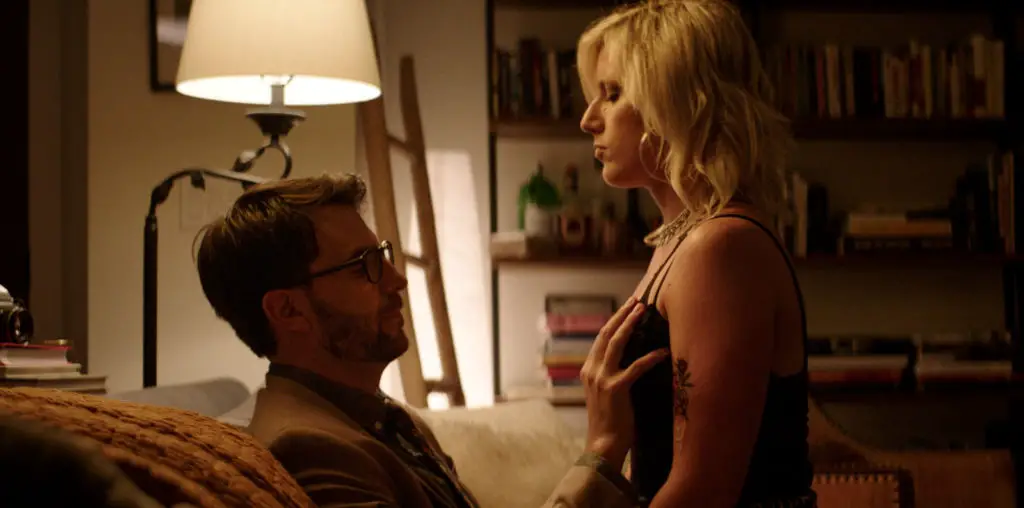
6. “Naughty Dallas: The Jack Ruby Footage” (1964). When Texas-based exploitation filmmaker Larry Buchanan wanted to shoot his stripper feature “Naughty Dallas” inside the Carousel Club in Dallas, he had one thing standing in his way: the strip joint’s manager, Jack Ruby. It was not that Ruby didn’t want the film made there, but rather he insisted that he have a role in the movie. Buchanan reluctantly shot footage of Ruby hamming it up in an impromptu drum session and then pretending to eject a few drunken good ol’ boys.
WHY IS IT LOST? Once the footage was shot, Buchanan tossed it away because he didn’t want Ruby in his film. He came to rue that decision after Ruby’s next foray in front of the cameras in November 1963. Some conspiracy theorists insist Lee Harvey Oswald was also in the lost Ruby footage, but Buchanan denied Oswald’s presence in the club during the shoot.
7. “No, No Nanette” (1930). This early talkie adaptation of the Broadway musical followed the adventures of a Bible salesman whose infatuation for a scatterbrained chorus girl leads him away from Christ’s path to Broadway, where he winds up backing a show designed to make her a star. Bernice Claire and Alexander Gray play the leads, with comic support coming from old reliables including ZaSu Pitts, Louise Fazenda and Lucien Littlefield.
WHY IS IT LOST? The film, which was partly shot in two-color Technicolor, is among the rather high number of early talkies that vanished due to neglect and poor preservation. Only parts of the soundtrack on Vitaphone discs survive.
8. “Raja Harishchandra” (1913). The first Indian film to connect with audiences was made by Dhundiraj Govind Phalke, who is sort of the D.W. Griffth of India’s cinema. Inspired by the Hollywood import “Life of Christ,” the film offered a cinematic vision of Hindu gods and goddesses. The film also broke an Indian taboo with the first bathtub scene in Indian movie history, although it was something of a cheat: the females in their wet saris and blouses clinging to their bodies were actually played by men in female garments (Phalke was unable to get any actresses to do this scene)
WHY IS IT LOST? Film preservation was not a concern in India until very recently, and the bulk of the nation’s silent cinema output is gone. Only fragments remain of this early landmark.
9. “Uncle Tom’s Fairy Tales” (1968). Penelope Spheeris was supposed to make her directing debut in this savage satire of America’s volatile race relations. The crux of the story concerned the fate of a white man who goes on trial raping a black woman. Richard Pryor, who was on a career upswing at the time through his stand-up comedy and occasional film appearances (including the popular “Wild in the Streets” from that year) was listed as the star, and most likely was meant to play the title role (most likely in a manner that Harriet Beecher Stowe could never imagine).
WHY IS IT LOST? The Internet Movie Database gives this rather odd explanation on why this obscure project vanished: “At the time of the making of this film, Richard Pryor’s wife complained that he was paying more attention to the film than he was to her, so he shredded the negative. No copies of the film are known to exist.”
10. “What a Widow!” (1930). The final collaboration between Gloria Swanson and her producer/lover Joseph P. Kennedy was this unsuccessful comedy about a young woman who suddenly becomes the center of romantic adventurers after she inherits $5 million when her rich old husband croaks.
WHY IS IT LOST? This independent production was a commercial failure and the bad-blood between Swanson and Kennedy at the tail end of its production ensured that both parties wanted to forget about their celluloid union. With neither one keeping track of the film, the prints vanished. No copy has ever been located.
Discover some other Lost Films>>>

It is really sad that some earliest movies or say legends of world cinema are no longer available now.